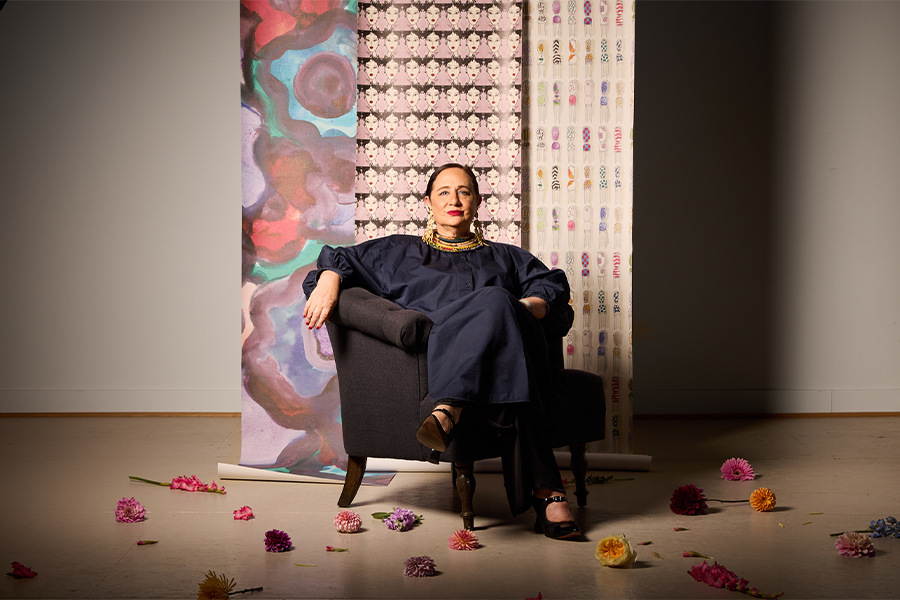Jacques Herzog and Pierre de Meuron founded their eponymous firm in Basel, Switzerland in 1978, just three years after completing their architecture studies. Friends since primary school, the two “copied carousels and things we saw at fairs. You could say we had some architectural inclinations, but they were naïve,” reflects Herzog. They didn’t grow up with or idolize any architects, “Rather, it was the world as we saw it that was inspiring—and still is today.”
In the firm’s infancy, the duo focused on small tasks, like refurbishing attics. These rather unglamorous projects provided an invaluable education, according to Herzog. The architects learned “what a roof is, what is under the tiles, and what is between the walls. If you want to express something as an architect, you have to know exactly how to produce it, otherwise it will work against you and your imagination.”
The Stone House in Tavole, Italy and the Goetz Collection in Munich were breakout projects. They “expressed an idea in architecture that didn’t exist at that time,” explains Herzog. “Minimalism was an expression we introduced into architecture because we were so connected to artists. We liked the attitude that came from [Donald] Judd, [Robert] Morris, and many others, and that was an entry for us into the architectural world, which was dominated by postmodernism, deconstructivism, and all those things we didn’t like at all.” As minimalism started to gain momentum—Herzog describes British architect John Pawson’s approach as more refined—with younger Swiss architects, the duo wasn’t interested in “pioneering a style.” Instead they chose another direction: reintroducing the forgotten notion of ornamentation as part of holistic architecture.
Before tackling such notable institutions as the Tate Modern in London, the Elbphilharmonie in Hamburg, Germany, and the Tai Kwun Centre for Heritage and Arts in Hong Kong, projects like Prada Aoyama in Tokyo and Dominus Winery in Yountville, California allowed Herzog & de Meuron to explore and manipulate materials into new permutations, inserting them into unusual contexts. Take the Eberswalde Senior Technical School in Germany, where the architects imprinted the warehouse-inspired buildings prefabricated concrete panels with photos found by artist Thomas Ruff, transforming the concrete into photographic paper. At Dominus, light filtering through the stone façade lends a sense of airiness to the heavyweight structure. To the pair, the structural, spatial, and ornamental are all intertwined, fluid components.
Yet, that doesn’t equate to a singular look. The raw concrete façade of Ian Schrager’s PUBLIC Hotel in New York, for instance, reveals a rippling texture thanks to treated sandblasted formwork and sky-tilted windows framed with polished aluminium. Herzog describes it as a naked building possessing a sensual quality: “You can feel all the different materials. They appeal to our human behavior. It fills all the senses.”
The Parrish Art Museum in Water Mill, New York conjures a similar feeling. Originally, the architects’ vision for this Hamptons cultural hub was a collection of different galleries; abstracts of studios that paid homage to artists from the area. The idea then morphed into a single, barn-like concrete structure that melds with the landscape. From the long bench, “you can sit in the sun with this open field in front of you. It’s ethereal in its organization,” points out Herzog. “It is iconic, many say, but at the same time, it is invisible.”
Today, with their almost 450-person firm (most are in Basel spread across “a village” of buildings from various eras, with different teams in different spaces), the Pritzker Prize-winning twosome continue to evolve their inspirational, influential, and unique approach to architecture, taking on fashion shows, exhibitions, and opera stages.
Architecture, and the beauty and comfort it yields, has the power to create happiness, Herzog believes. That’s why each project the firm touches subverts the status quo—which is all part of their plan to “make cities attractive for all people.”


